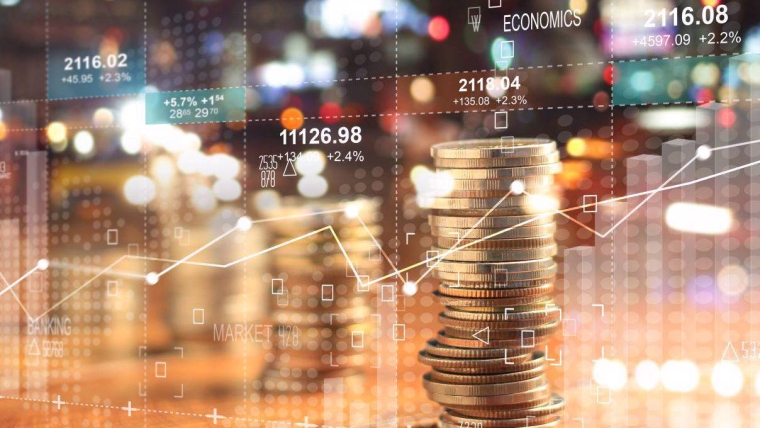
By Mariana Mazzucato and Simon Sharpe*
The United Kingdom is entering its deepest recession in 300 years. Millions of jobs are at risk. And national debt has exceeded 100% of GDP. [New Zealand is currently at 26% but will peak at 53% of GDP in 2023.] Now is hardly the time to explore the conceptual underpinnings of economic theory, right?
In fact, as governments everywhere are borrowing, spending, and regulating on an unprecedented scale, a deeper understanding of economic decision-making is essential both to accelerate the recovery and to avoid longer-term risks. That is why the UK Treasury’s new guidance on decision-making for transformational change is so welcome, and why finance ministries everywhere should follow suit.
In a recent study for the UK’s Better Regulation Executive, we found that, while public policy organisations are increasingly diversifying their approaches to decision-making, many remain overly reliant on static tools such as cost-benefit analysis. Such tools are ill-suited to understanding, predicting, and driving innovation and structural change in the economy.
In the UK, critics of cost-benefit analysis argue it has contributed to worsening regional inequality. If infrastructure investments in higher-productivity areas are assessed as more valuable, these wealthier regions will receive the lion’s share of new investments, raising their productivity further. This reinforcing feedback loop will naturally cause a growing gulf between the haves and the have-nots. Static cost-benefit analysis does not recognise these dynamic feedbacks.
Prevailing economic-policy frameworks have likewise hindered the global response to climate change. Static analysis has suggested that replacing coal with gas would be the cheapest way to reduce emissions. But this utterly ignored the dynamic feedbacks that would drive renewables rapidly to become the cheapest form of electricity generation.
These are not market failures; they are failures in our understanding of how markets work.
When we worked together on the UK’s Industrial Strategy in 2017, we found that many economists had highly restrictive views about the role of the state. Some advocated government support only for sectors that had already proven to be relatively competitive exporters. Others said anything beyond fixing market failures was too much. For still others, the best industrial strategy was none at all.
And yet it was state-led investments that led to the Internet and smartphones – investments that were aimed not at fixing market failures, but at developing new opportunities. If South Korea had concentrated during the post-World War II years on sectors where it had a proven comparative advantage, it would have doubled down on rice exports rather than transforming itself into the world’s most innovative economy.
The UK Treasury’s new guidance is revolutionary in recognising that the economy is a complex system, shaped by dynamic feedbacks and constant change. This new understanding, based on the concepts and mathematics of evolution, rather than those of Newtonian mechanics, can look beyond the allocation of scarce resources to the creation of new ones. It recognises that innovation, growth, and transformation are happening all the time; it is up to the state to encourage a direction of change that is advantageous to society.
Direction-setting choices are important, because seemingly small developments can have huge, long-lasting consequences. The innovations that gave internal combustion engines the edge over electric vehicles in the early 1900s had profound effects – on the oil industry, urban planning, global geopolitics, and the planet – with which we are grappling to this day.
Path dependence arises because markets are deeply social, embedded in institutions, norms, and routines, and because technologies benefit from increasing returns. As a result, markets can get locked into sub-optimal conditions, and economies can get stuck in competitive positions, whether they like it or not. For decades, Germany has been a world leader in machine tools, and the United States in information and communications technologies.
Today, the world is moving toward a clean-energy economy. But the shape it takes, the pace at which it develops, and the competitive positions of countries within it depend on the economic-policy decisions governments make now. Governments that try to stimulate their economies by building new coal power plants will create new stranded assets and increase the future risk of job losses. Those that invest strategically in clean technologies, by contrast, will claim superior positions in the economy of the future.
Having set a direction, governments need to identify the most effective policies to drive progress. In complex systems, cause and effect are usually disproportionate. To secure large gains from small inputs, and not vice versa, we must find points of leverage.
Many economists have recommended a single carbon price, applied equally across the economy, as the most efficient approach to reducing greenhouse-gas emissions. But, apart from a few exceptions, where targeted carbon pricing has helped to activate tipping points, new investments, not by carbon taxes, have so far driven almost all the world’s progress in low-carbon transitions.
This should not be a surprise. Imagine the incumbent fossil-fuel economy as a large building that needs to be demolished. Should we drive up in a bulldozer and push hard against the side, spreading pressure equally across the whole edifice, or should we concentrate that same energy in a controlled explosion at a critical point in the structure?
Identifying those critical points requires a better understanding of feedbacks in the economy, as we advocated in 2018. Policy choices also benefit from the consideration of dynamic spillovers – where change in one sector catalyzes further changes in others. For example, the software industry emerged as a spillover from NASA’s Apollo program. Had the program been evaluated based on cost-benefit analysis, it would never have been started.
In a new working paper, we suggest how traditional cost-benefit analysis can be broadened to become “risk-opportunity analysis,” in which the mapping and manipulation of feedbacks is central. By grappling with the economy in all its messy, ever-changing complexity, this approach is better able to ensure that our investments are not wasted, our recovery is not delayed, and the new world economy we create is more prosperous, more equal, and more sustainable.
Mariana Mazzucato, Professor in the Economics of Innovation and Public Value at University College London and Founding Director of the UCL Institute for Innovation and Public Purpose, is Chair of the World Health Organization’s Council on the Economics of Health for All. She is the author of The Value of Everything: Making and Taking in the Global Economy, The Entrepreneurial State: Debunking Public vs. Private Sector Myths, and the forthcoming Mission Economy: A Moonshot Guide to Changing Capitalism (Allen Lane, January 2021). Simon Sharpe is a visiting policy fellow at the UCL Institute for Innovation and Public Purpose. Copyright: Project Syndicate, 2020, and published here with permission.
7 Comments
Great article.
Too funny, when critical thought shows progressive projects to be untenable, folk wish to change the critical thought framework. Idiots.
Brealey and Myres included option analysis in CBA since - forever. (40 years plus).
A far better view as to how innovation operates, including a much better critic of the ICE, see Matt's work.
https://www.amazon.com/How-Innovation-Works-Flourishes-Freedom/dp/00629…
Prevailing economic-policy frameworks have likewise hindered the global response to climate change. Static analysis has suggested that replacing coal with gas would be the cheapest way to reduce emissions. But this utterly ignored the dynamic feedbacks that would drive renewables rapidly to become the cheapest form of electricity generation.
Toyota CEO Agrees With Elon Musk: We Don't Have Enough Electricity to Electrify All the Cars
Audaxes - but we can make more electricity
Incorrect statement (although not as silly at HenryT upthread.
Energy cannot be created. We can trace almost all we use, to the sun. Via heat-lifted rain, in the case of hydro; via sun-grown trees in the case of coal, small eaters-of-things-photosynthetic in the case of oil. The problem is the rate at which we are reducing the one-off stock of stored solar energy (fossil is the giveaway word) and our inability to replace this draw-down. Entropy factors in, as does EROEI, as I've long ranted about here. You come up against shortages of lithium, copper, rare earths, spatial area (displacing something else). And as a knock-on, up against infrastructure-triage (which takes energy too; think Ford Rangers into E bikes, city outfalls back to paddocks) too.
The writers don't get this. Mazzucato is trained as an economist - so stocks don't figure for her (the joke being she gets Climate Change, which is the result of us burning our way through a stock, and of us saturating a sink-capacity, which in a way is a stock too).
We can indeed divert some more solar energy, transmit it in electrical form and use it, leaving it typically as irretrievable low-grade heat (high entropy energy). We will, indeed, end up on renewably-obtained energy, by default. But we won't replace FF, nowhere near. Mazzucato et al don't get that, even though they're a mile ahead of the crony-obfuscator brigade (like HT).
Interesting - I understand the point you are making, but are you sure on the 'nowhere near'? The literature seems finely balanced on this - by no means conclusive either way. A key sticking point seems to be how realistic it is to assume that societies will change how they live to change / reduce their energy consumption.
Correct, Earth sources of energy all traced back to the sun, cannot be created, only transferred, changed forms etc. Any Joules calculated balance to be relatively equals from dispersed summary of the original formed source. Which then now came human of ability to harness it, which bring me about your first line of response, 'incorrect statement' it is correct when applied using ideal calculations during short time of human life, but using longer term? actually 'we do & can', if we want to that is by exploiting further the tiny amount that originally gave by the sun, to then generate that micro sun energy down here, it's just that current dreadful scare of 'what if' and the disposal by products of it..Nuclear, yes - no one willing to admit it here in NZ, but worldwide? - who knows? 2000years from now, Earth population knew how to manage it better - my kindergarten thought for example.. says.. shifted the by product.. to different galaxy systems, but this algebra equates to basically shrinking the planet... yet, again in so many countless years ahead. If we don't want to envision as such, then yea... this ever growing 8billions inhabitants, really must comprehend that everything must be in nice, ideal/not ideal cyclical energy transformation.. but really tough to convince us human, including to accept, natural death from cancer is part of that cyclic Earth energy transformation.. the one that really draw those energy transformation by product dispersal into unpleasant forms is just that... 'human greed'.

We welcome your comments below. If you are not already registered, please register to comment.
Remember we welcome robust, respectful and insightful debate. We don't welcome abusive or defamatory comments and will de-register those repeatedly making such comments. Our current comment policy is here.